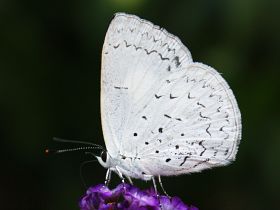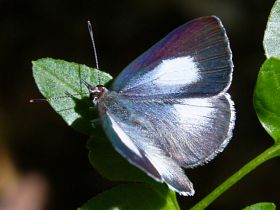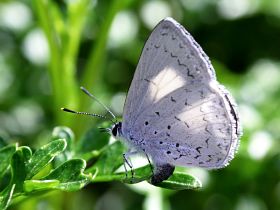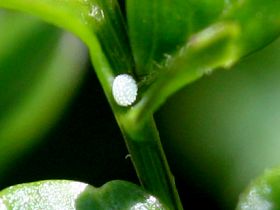Common Pencil Blue (Candalides absimilis)
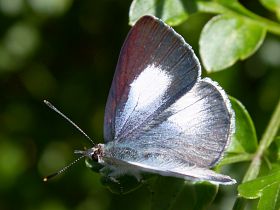
Appearance: Male upperside uniformly blue; female upperside grey-brown with extended white patches and faint blue suffusion. Underside of both sexes light grey with characteristic pattern of dark spots and markings. Very similar to the Dark Pencil Blue (Candalides consimilis).
Wingspan: 3 cm
Season: Several generations all around the year.
Range: Along the east coast of Australia.
Habitat: Edges of rainforest and gallery forest. Also suburban gardens in Sydney and Brisbane.
Photo: Female, Sydney, NSW, 17 / 01 / 2010.
Notes
The Common Pencil Blue can normally be found along the edges of rainforest and gallery forest, but also in coastal eucalypt forest and suburban gardens, along the east coast of Australia from eastern VIC across the ACT, eastern NSW, and eastern QLD up to Cape York Peninsula. Males are usually very active and continuously patrol the area around the larval food plants in search of females. Females are much easier to observe because they frequently rest in the sunshine or feed on flowers.
The Common Pencil Blue is very similar to the Dark Pencil Blue (Candalides consimilis) which can also be found along the east coast of Australia. The underside pattern is identical in both species. Common Pencil Blue females, however, have the white patches on the upperside somewhat more extended and the blue suffusion less strong than Dark Pencil Blue females.
Additional Photos
